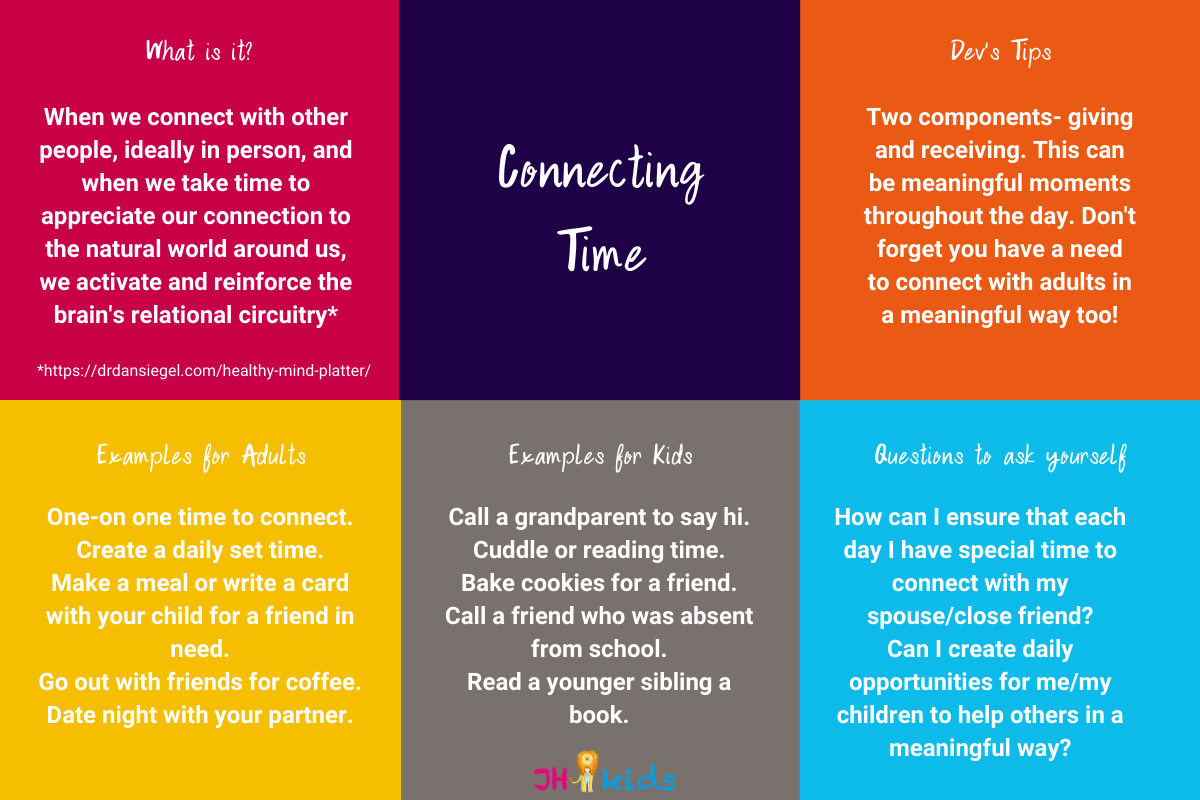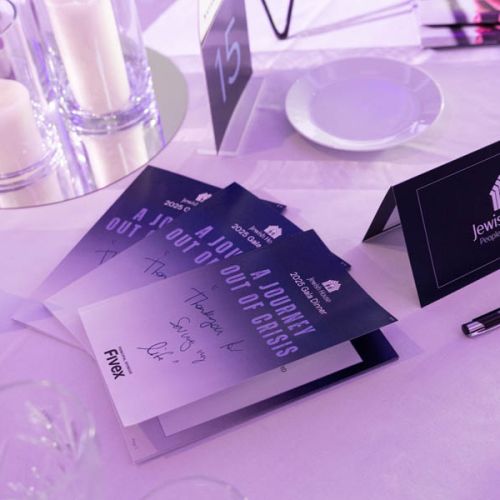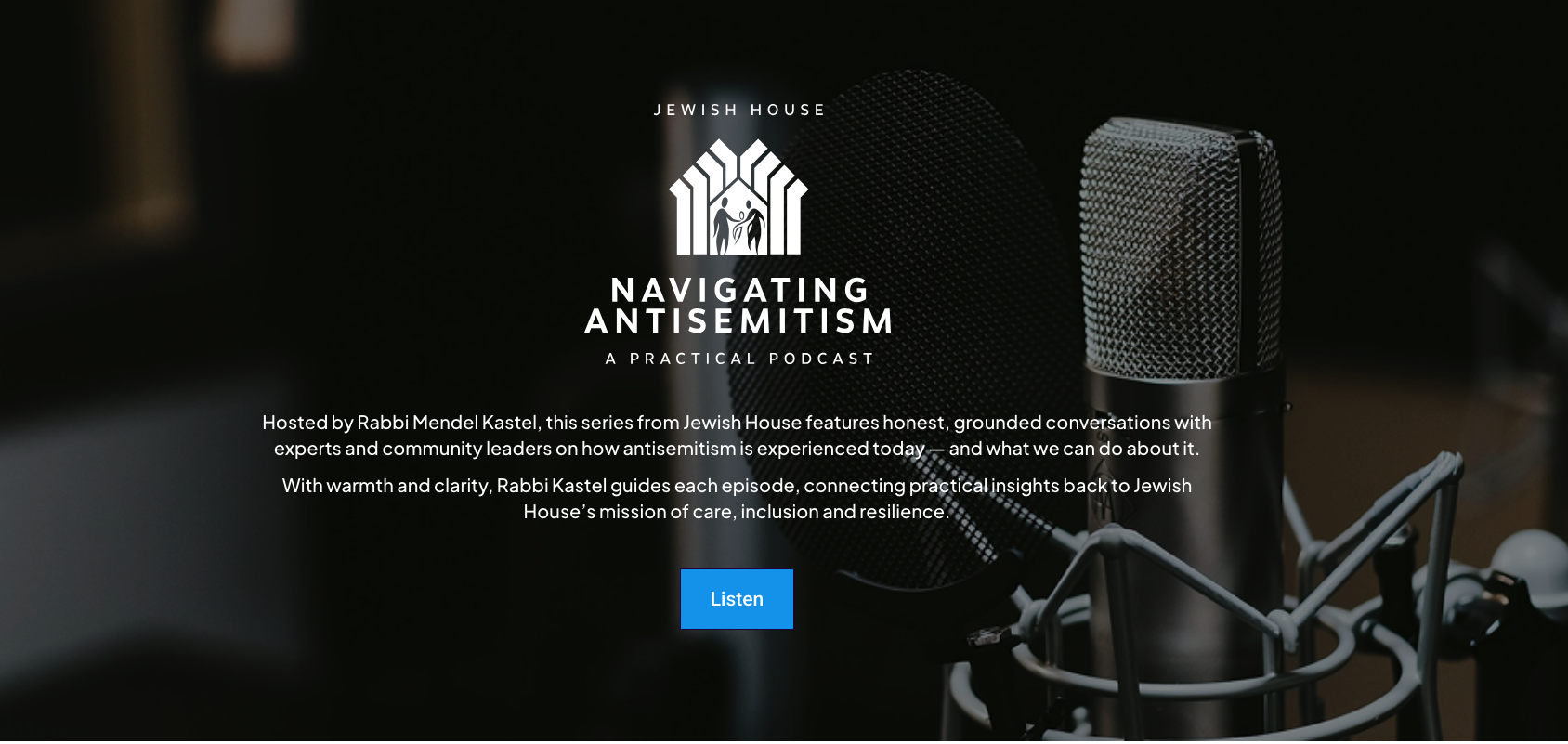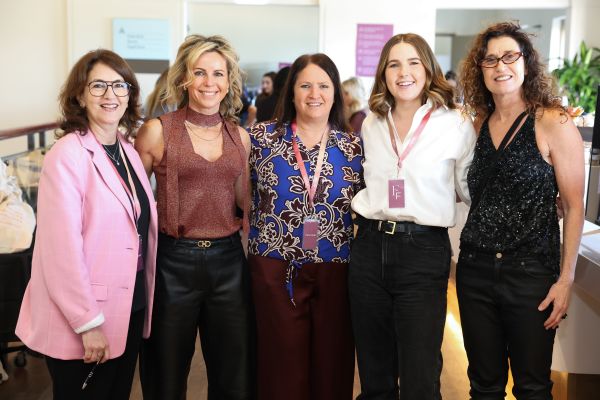
Article 3 of 8 Theme Focussing on the Healthy Mind Platter created by Dr Daniel Siegel and Dr David Rock
Disclaimer: The original framework of Healthy Mind Platter can be found at https://drdansiegel.com/healthy-mind-platter/ The views and opinions expressed in this article are those of the authors and do not necessarily reflect the intended views of the creators of the Health Mind Platter; Dr Daniel Siegel and Dr David Rock.

Connection- the Healing Power of Relationships.
Social connection is a basic human need. In a TEDx talk, Dr Dan Siegel shared the research that the number one indicator for physical health, mental health and longevity is positive connections with others. Our kids need connection with other kids, as well as with parents or other significant adults, and we as parents, also need connection with adults and our children.
How do relationships affect health? Cacioppo and colleagues found that satisfying social relationships are associated with more positive outlooks on life, more secure attachments and interactions with others, more flexible autonomic activation when confronting acute psychological challenges, and more efficient restorative behaviours.
Basically, good relationships can alter our mindset, help us feel more secure, allows for more flexibility when facing challenges and means that after a crisis we can recover quickly.
There are two ways to connect- through giving and receiving, and we want to make space in our day for both.
There is certainly a correlation between the two, because when I am giving to my child by cuddling them in the evening and singing them a song I am also receiving.

What is connecting time? During each day we should try and find time to connect with our children one on one, thereby filling their emotional cup. In these moments we are sending messages of love, security, importance and building their core sense of self, trust and empathy. We also model positive relational interactions.
What might it look like? Some of us prefer to have more structure and routine to our day- and some kids are the same. It could be catching a few moments every day in the car on the way to/from school, or when your child lies in bed at night you give them a long cuddle, or rub their back, or sing songs, or catch up about their day with the Rose, Bud and Thorn activity. Or you may feel depleted by the end of the day and bedtime is not your favourite time of the day! That’s ok!
Where else can you make the time? Maybe your children can take turns coming on an afternoon stroll with you or playing with you one on one (board game, Lego, dress ups, building etc). If they have an email account, you can email them surprise letters, or you can be spontaneous and take a detour on the way home for ice cream.
Connecting is also holding your child for an extra-long cuddle and whispering ‘I love you’ in their ear. If homework isn’t stressful, it can also be positive connecting time, as can helping your child get dressed in the morning or brushing their teeth at night. If your child is like one of mine, then connecting time is sitting with him and learning how to play Minecraft.

Do we have to be the only ones who connect with our children?
No. Our children can have meaningful relationships with adults other than their parents. I remember how validating this was to hear!
Is there any time left for adult connecting time? There certainly should be!
When can you intentionally make time to connect with other adults?
When you meet friend for coffee, try to put your phones away. When you hug your partner, hold them close for a few extra seconds. When your partner walks through the front door, take a few moments to greet them. We shouldn’t underestimate the benefits for our children when they see us taking care of our needs and making space for ourselves! We can say “Mummy is going out for dinner with a friend to connect” or “Daddy is heading out to play tennis with a mate”, and if our child gets upset by this, we can gently remind them of the importance of connection time for our brain health and general wellbeing.
What about giving to others?
When we give to others it triggers our ‘happy hormones”- oxytocin, dopamine and serotonin (more here- great, simplified article on the Neuroscience of Giving).
Maybe you volunteer at the neighbourhood homeless shelter or visit the sick once a week. Or maybe you schedule in phone calls with loved ones. Others may prefer a more spontaneous approach where they let someone go ahead at the grocery checkout, hold open a door for someone, or stop to help someone change their car tyre.
Encourage your children to do the same. Ask them if anyone was missing from school today? Maybe their classmate was unwell and your child can give them a call or make them a card. Ask your kids for suggestions too. They might want to cuddle puppies in the shelter, donate some birthday money, read to their younger sibling or neighbour, or invite a new kid over to play.
Imagine we woke up determined to turn to each family member at some point during the day and connect with them- through a hug or a kiss, or a whisper of encouragement in the ear?

My regular day involves me running around from morning to evening ensuring that everything that needs to get done gets done leaving little time for spontaneous moments.
When I started investing in connecting time I decided to take a spontaneous approach. I would stoop down and whisper something silly in my three year olds ear, or ask my 6 year old for a tight squeeze, I would sneak a love note into my 9 year olds lunch box and ask my ten year old to stay up a few minutes after bed time to chat. At first, my kids would get surprised by the random moment of connection as it was not something that they were used to. They would respond with a smile, a random hug back and sometimes a positive mood change.
Connecting Time Challenge
Pick one and let us know how you go
- The next time you are connecting with your child, try and use all your senses to focus- eye contact, maybe sit them on your lap, give them a back rub or tickle or cuddle or hand hold. Leave your phone in another room.
- Schedule a night out with a friend.
- Together with your child jot down a few ways that you can give to others (including immediate family members).
- The next time you do something good for another person, tell your child about it.
That’s all from me today. Give the challenges a go. They may not be easy at first, but are well worth it as you will see for yourselves. Know that we are in this together and get in touch to take the conversation further.
Chat again soon,
Devorah T
Disclaimer: The original framework of Healthy Mind Platter can be found at https://drdansiegel.com/healthy-mind-platter/ The views and opinions expressed in this article are those of the authors and do not necessarily reflect the intended views of the creators of the Health Mind Platter; Dr Daniel Siegel and Dr David Rock.
Further Resources:
- Click here for the original Healthy Mind Platter

A Journey Out of Crisis: Celebrating the 2025 Jewish House G...

A New Chapter of Care: Jewish House Opens in Sydney’s Inne...

A New Resource for a Growing Need - Jewish House Launches Na...

Five Years of Fashion Forward: A Celebration of Style, Susta...

“We Had Nowhere to Go”: Why Your Support Matters This EO...

More Than Shelter: How the Randwick STA Is Changing Lives fo...

We’re Partnering with Ray White Double Bay to Better Suppo...

NSW Government’s $200K Commitment to Jewish House: Strengt...

Fashion Forward: Giving Pre-Loved Clothes a Second Life for ...









